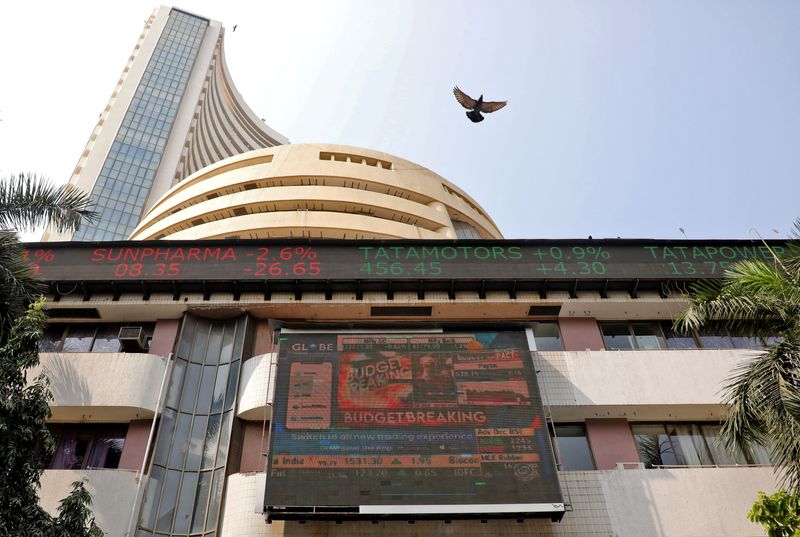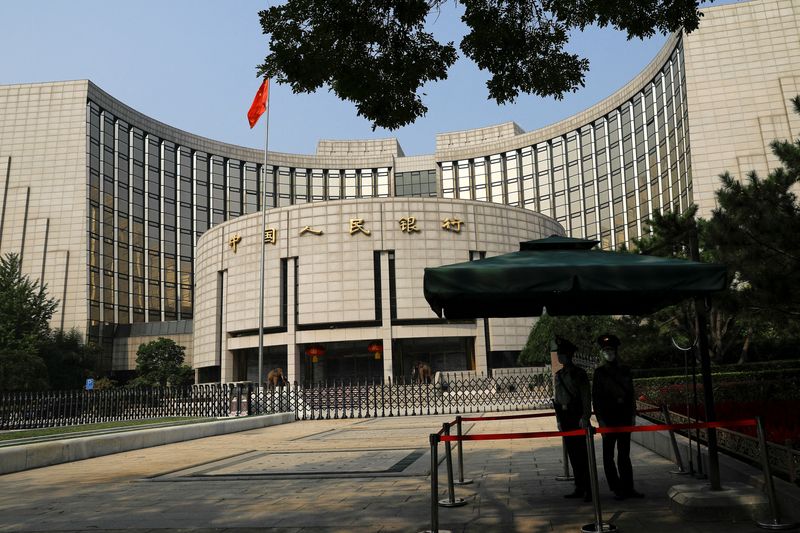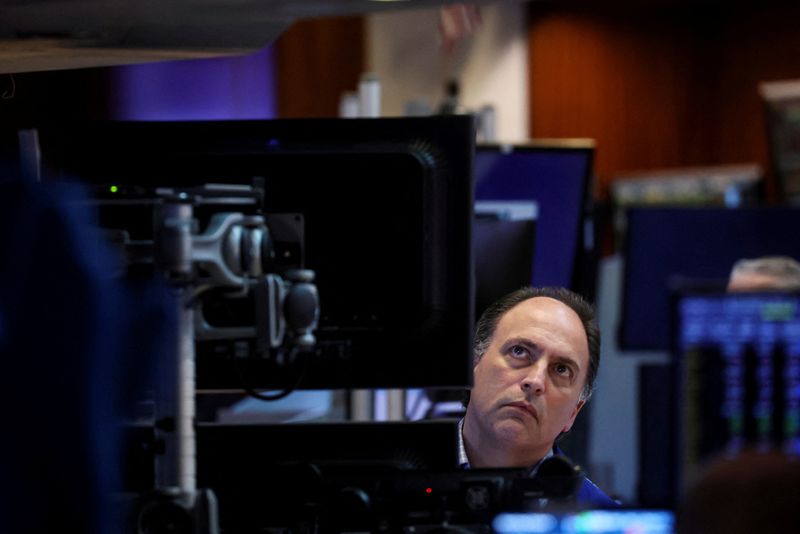Select Language

By Jihoon Lee, Cynthia Kim and Joyce Lee
SEOUL (Reuters) - As South Korea scrambles to halt the sharp decline in its birth rate, policymakers are having a hard time convincing many in their 20s and 30s that parenthood is a better investment than stylish clothes or fancy restaurants.
Asia's fourth-largest economy plans to launch a new government ministry dedicated to demographic challenges after years of incentives failed to ease the baby crisis.
But for Park Yeon, a 28-year-old fashion Instagrammer and aspiring singer, spending choices are guided mostly by her appetites for clothing and travel, leaving little budget for marriage and babies.
"I'm all about YOLO (you only live once)," said Park as she sells her Supreme T-shirts at a thrift fashion festival in Seoul's high-fashion enclave of Seongsu-dong.
"There isn't enough left to save each month after I do things to reward myself. Getting married might happen at some point but being happy right now - that's more important, right?"
South Korea continues to break its own record for having the world's lowest birth rate, which hit a fresh low last year.
Sociologists say the lifestyle priorities of Koreans in their 20s and 30s - considered Generations Y and Z - mean they spend more and save less on average than the wider population or their peers in other countries, neither of which are conducive to nest building.
"They are status hunting. Their high spending habits show young people are working on their own emblems of success online rather than focusing on the impossible goals of settling down and have children," said Jung Jae-hoon, a sociology professor at Seoul Women's University.
Not even South Korea's aggressive interest rate hikes over the past three years have been able to rein in youthful spending.
The savings rate for those in their 30s declined to 28.5% in the first quarter from 29.4% five years ago, while that for all other age groups increased in the same period, central bank data shows.
At the same time, people in their 20s and 30s make up the biggest spenders at department stores and top-tier hotels while their travel spending rose to 40.1% from 33.3% in the past three years.
The proportion of spending by those in their 20s at high-end department stores has almost doubled to 12% in the three years to May, data from Hyundai (OTC:HYMTF) Card shows, while that for all other age groups declined.
Last year alone, revenue at pricey buffet restaurants jumped 30.3%, versus a gain of 10.5% at fast food restaurants and 9% for the entire dining industry, according to market research firm Euromonitor.
In one example, sales at Seoul Dragon City Hotel - a popular Instagram spot - for its 90,000 won ($68) all-you-can-eat seasonal strawberry dessert jumped 150% from last winter, even after the hotel hiked the price by 12.5%.
In contrast, 25- to 29-year-olds in Australia slashed spending 3.5% in the first quarter of 2024 from a year earlier due to cost-of-living pressure, a report by Commonwealth Bank of Australia (OTC:CMWAY) shows.
Koreans' fancy tastes have made them the world's biggest per-capita spenders on luxury brands, Morgan Stanley's research showed last year, and a hot destination for the biggest luxury brands.
Chanel, Celine and Dior have all signed deals with teen-focused K-pop groups such as Blackpink and NewJeans as global brand ambassadors.
PLEASURE AND PAIN
To be sure, financial hardship is by far the biggest reason South Koreans cited for not having children, according to a survey by research firm PMI Co. in May.
About 46% of 1,800 respondents blamed either job uncertainty or education costs for this decision.
That's worsened by annual incomes only rising 2.0% for those in their 20s and 30s last year, slower than the 4.5% increase for all households, according to Statistics Korea.
But Jung added a youth focus on more immediate pleasures also explains why young people don't respond to the government's subsidy-based baby boosting policies.
The Yoon Suk Yeol administration in May announced a plan to create a new ministry to focus on demographic issues, after dozens of policy measures including subsidies to reverse vasectomies, cash support for families with newborns, free taxi rides and longer paid childcare leave failed to reverse the plunging birth rates.
In a survey of 17 advanced countries by the U.S. Pew Research Center in 2021 asking what makes life meaningful, South Korea was the only country where material well-being was the top response. Elsewhere, family or health was the top answer.
For Park, having children is an add-on she may consider if her singing career takes off.
"If things work out well with what I do, savings and getting married and all those will follow. For now, enjoying my life and working on my dream job are my priorities," she said.

By Patturaja Murugaboopathy and Gaurav Dogra
(Reuters) - Foreign investors are unloading their holdings of expensive Indian stocks and turning instead to new listings in primary markets as they seek cheaper exposure to the market and better returns.
Their selling has been driven by profit booking as Indian stocks trade at record highs, and at valuations topping those of most major stock markets.
Investors are pumping money instead into initial public offerings (IPOs), whose valuations are lower and where there is less of a scramble for stocks.
Foreigners have so far sold a net $3.42 billion worth of equities in the secondary market. They purchased a net $1.47 billion through primary market issuances so far this month, according to India's Central Depository Services Ltd.
A Societe Generale (OTC:SCGLY) (SG) report showed foreigners have bought more than $6 billion of stocks on the primary market this year, the highest since 2021.
"Foreign investors are shying from deploying funds into secondary market for long term and seeing better and faster return prospects in the primary market," said Rajat Agarwal, Asia equity strategist at SG.
They are sellers in the secondary market this year partly because earnings growth prospects have moderated, he said.
India's NSE Nifty 50 index has risen 14% this year, and the 12-month price-to-earnings ratio for its large-and-mid cap stocks stands at 24 times, the highest among major global markets, according to LSEG data.
Meanwhile, the Indian primary market has been busy, with IPO listings of $7.3 billion so far this year - the highest in Asia, followed by China's $5.1 billion, according to Dealogic data.
Foreigners are lured by the cheapness of stocks in primary markets.
Jon Withaar, head of Asia Special Situations, Pictet Asset Management, said the valuations tend to be lower in primary markets due to lack of competition from retail, index, ETFs and most types of institutional investors.
"Companies offering IPOs or rights issues tend to price their shares conservatively to ensure a successful launch and attract more investor interest," said Michael Collins, chief executive officer of WinCap Financial.
"This lower valuation may also be seen as an opportunity for foreign investors who believe that these companies have potential for significant growth in the long run".
With the Fed poised to lower interest rates and investors looking to enter riskier markets for higher returns, analysts expect foreigners will continue to use this route to own Indian stocks.

By Qiaoyi Li and Ryan Woo
BEIJING (Reuters) - China's industrial profits grew faster in July buoyed by high-tech manufacturing, even as sluggish domestic demand weighed on the recovery in the world's second-largest economy.
Profits in July jumped 4.1% from a year earlier following a 3.6% rise in June, National Bureau of Statistics (NBS) data showed on Tuesday.
For the January-July period, profits expanded slightly faster at 3.6% compared with 3.5% in the first half, offering some hope of improving momentum amid dreary factory output, export, prices and banking lending numbers earlier in August.
"The mild expansion in industrial profits showed that domestic macro policies are taking effect" as the factory sector is undergoing a transition and upgrade, said Zhou Maohua, a macroeconomic researcher at China Everbright (OTC:CHFFF) Bank.
The high-tech manufacturing sector, including the making of lithium-ion batteries and semiconductors and related equipment, led the earnings growth with a 12.8% rise in the January-July period, the data showed.
Still, "domestic consumption demand remains weak while the external environment is complex and volatile," said NBS statistician Wei Ning, suggesting more efforts were needed to boost domestic demand.
Tamer shipments last month raised a red flag over the country's export-driven recovery and heightened concerns about frail domestic demand.
China's July bank loans recorded the first contraction in 19 years, central bank data showed earlier.
Electric vehicle battery giant CATL recorded faster profit growth in the second quarter, but its revenue fell at a faster clip during the quarter, as EV sales slow in the world's largest auto market.
Amid lacklustre demand, a prolonged housing downturn and employment worries, Beijing is looking to pivot its stimulus toward consumption.
At a cabinet plenary session earlier this month, Premier Li Qiang vowed to boost the economy with a focus on consumption.
State-owned firms booked a 1% rise in profits in the first seven months, foreign firms posted a 9.9% gain, while private-sector companies saw profits up 7.3%, NBS data showed.
Industrial profit numbers cover firms with annual revenue of at least 20 million yuan ($2.80 million) from their main operations.
($1 = 7.1395 Chinese yuan)

BEIJING (Reuters) - China's industrial profits grew faster in July, data showed on Tuesday, even as sluggish domestic demand weighs on the recovery in the world's second-largest economy.
Profits in July jumped 4.1% from a year earlier following a 3.6% rise in June, according to National Bureau of Statistics (NBS) data.
For the January-July period, profits expanded slightly faster at 3.6% compared with 3.5% in the first half, offering some hope of improving momentum amid dreary factory output, export, prices and banking lending numbers earlier in August.
Tamer shipments last month raised a red flag over the country's export-driven recovery and heightened concerns about frail domestic demand.
China's July bank loans recorded the first contraction in 19 years, central bank data showed earlier.
Electric vehicle battery giant CATL recorded faster profit growth in the second quarter, but its revenue fell at a faster clip during the quarter, as EV sales slow in the world's largest auto market.
Amid lacklustre demand, a prolonged housing downturn and employment worries, Beijing is looking to pivot its stimulus toward consumption.
At a cabinet plenary session earlier this month, Premier Li Qiang vowed to boost the economy with a focus on consumption.
State-owned firms booked a 1% rise in profits in the first seven months, foreign firms posted a 9.9% gain, while private-sector companies saw profits up 7.3%, NBS data showed.
Industrial profit numbers cover firms with annual revenue of at least 20 million yuan ($2.80 million) from their main operations.
($1 = 7.1395 Chinese yuan)

By Elizabeth Pineau
PARIS (Reuters) -French President Emmanuel Macron ruled out naming a prime minister from the leftist New Popular Front alliance and will instead start a new round of consultations on Tuesday with parties to try to form a new government, Macron's office said.
Realising a government led by the New Popular Front (NFP) would immediately face a no-confidence vote in parliament from all other parties, Macron will confer with party heads and political leaders, the statement said on Monday. The NFP is a broad alliance of parties ranging from the moderate Socialists to Jean-Luc Melenchon's far-left France Unbowed.
Macron's announcement suggests there is no imminent end in sight to the country's political crisis after he called a shock snap election that delivered an unwieldy hung parliament.
No grouping emerged from the snap election earlier this summer with a majority, with the vote evenly split between the New Popular Front, Macron's centrist bloc and the far-right National Rally.
The New Popular Front won more votes than any other party, and has argued that its candidate, little known civil servant Lucie Castets, should be named prime minister.
Castets told Macron on Friday that the left is entitled to form the next government. The Elysee statement came after the New Popular Front said it would not take part in any new consultations unless it was to discuss Castets' nomination.
Leaders from France's far-right National Rally said earlier on Monday their party will block any prime ministerial candidate from the New Popular Front, narrowing Macron's options to resolve the stalemate.
Marine Le Pen and Jordan Bardella, the political tag team that runs the National Rally, met with Macron on Monday. After their one-hour meeting, Bardella said the NFP was a "danger" for the country.
"The New Popular Front in its programme, in its movements, as well as the personalities who embody it represents a danger to public order, civil peace and obviously for the economic life of the country," Bardella told reporters. "We intend to protect the country from a government that would fracture French society."
It remains to be seen who Macron will turn to. The eventual name, someone with the broadest possible appeal, will still need to win approval from lawmakers, and if they say no, Macron will have to go back to the drawing board.
Macron had until now ignored the New Popular Front's nomination, and a source close to him said he believed the balance of power lies more with the centre or centre-right.
Some possible candidates that Macron is mulling include a conservative regional president, Xavier Bertrand, and former Socialist Prime Minister Bernard Cazeneuve, sources have said. French media recently mentioned Karim Bouamrane, the Socialist mayor of an impoverished Paris suburb, as another possible name.
Le Pen suggested Macron could call a referendum to chart a path out of the chaos, and said she was opposed to a so-called "technical" government of apolitical technocrats, saying "there are only political governments hiding behind technical names."

LONDON (Reuters) -The latest earnings from AI darling Nvidia (NASDAQ:NVDA) and key inflation numbers in the euro area and Australia should keep markets busy in the coming week.
Gold's relentless climb to record highs and a dollar under pressure as U.S. rate cut speculation builds are also in investors' sights.
Here's your guide to the week ahead in financial markets from Rae Wee in Singapore, Sruthi Shankar in Bangalore, Ira Iosebashvili in New York, Yoruk Bahceli in Amsterdam, and Pratima Desai in London.
1/ NVIDIA, YOU'RE UP
Investor enthusiasm for artificial intelligence could be tested when chipmaker Nvidia reports earnings on Aug. 28.
Nvidia’s chips are seen as the gold standard in the AI-space and its shares are up around 160% this year, helping to power the S&P 500 to record highs.
But the stock's stunning, multi-year run and the AI-mania have also drawn comparisons to the dot-com craze that imploded more than two decades ago.
Investors’ reaction to disappointing results from megacap names such as Alphabet (NASDAQ:GOOGL) and Tesla (NASDAQ:TSLA) last month suggests markets may not be in a forgiving mood, especially when valuations for many companies in the sector are stretched.
Data highlights meanwhile include Friday's U.S. Personal Consumption Expenditures (PCE) price index, a key inflation gauge tracked by the Federal Reserve.
2/ WHEN SEPTEMBER COMES
August euro zone inflation numbers on Friday will be key to European Central Bank policymakers deciding whether or not to cut rates in September.
The data, preceded by national releases starting on Thursday, follows a small but unexpected rise in July, highlighting a bumpy last mile in curbing inflation.
Headline inflation may ease as oil prices have fallen, but focus will remain on the core figure and the dominant services sector, where price growth remains stickier.
Any upside surprises may warrant caution, as traders have ramped up ECB rate cut bets in recent weeks. Focus has turned to growth risks, but euro zone business activity showed surprising strength in August.
Traders fully price in another 25 basis point rate cut on Sept. 12, and see a high chance of two more moves after that by year-end.
3/ HIGH STAKES
The stakes are high for the Reserve Bank of Australia (RBA), which has insisted that interest rates need to stay restrictive for an "extended period" since underlying inflation remains too high for comfort.
Wednesday's July inflation numbers could show headline inflation diving back into the RBA's 2-3% target band for the first time in three years.
And any signs that inflation pressures are abating could pile pressure on the central bank. It has become an outlier globally with a reluctance to lower rates while many peers look to kick off, or have already begun, easing cycles.
Investors are also hoping that Wednesday's data could provide some relief to consumer sentiment, which has taken a hit from the weight of steep borrowing costs.
Elsewhere, Tokyo's August inflation report on Friday potentially offers further clues on Japan's rate outlook.
4/ EURO BULLS
The euro is at its highest this year against the dollar, benefiting from recent ructions in global markets.
Diverging U.S. and euro area rate expectations are behind its gains. Traders price around 100 bps of Fed rate cuts by year-end, up sharply from before the latest U.S. payrolls data, while only fully pricing two more 25 bps ECB cuts.
The question is whether the euro, also at its highest on a trade-weighted basis on record, can sustain its momentum.
Germany's business activity contracted by more than expected in August, a negative sign for Europe's economic engine, while euro zone wage growth slowed last quarter, supporting the case for an ECB September cut.
Euro bulls are a shy bunch, price action in recent years suggests. They may need more convincing of the euro's rebound before coming out in force.
5/ ALL THAT GLITTERS
Gold has hit consecutive records since 2022, and has surged over 20% so far this year. Now $3,000 an ounce beckons.
The stars have aligned for the precious metal used primarily to preserve wealth during periods of heightened security risks and political and economic turmoil.
Russia's war on Ukraine triggered gold's rally in February 2022. Soaring commodity prices in the aftermath fueled inflation, which erodes the value of monetary assets.
Middle East tensions and uncertainty from the fast-approaching U.S. Presidential election have spurred further gains.
Reinforcing the buy bullion trade is the prospect of U.S. interest rate cuts, pressuring the U.S. currency and boosting gold's appeal. It has a negative relationship with the dollar.
But gold bulls should bear in mind the old adage that "nothing goes up in a straight line" because markets typically "buy the rumour, sell the fact".

By Devayani Sathyan
BENGALURU (Reuters) - India's economic growth likely moderated and grew at its slowest pace in a year in the April-June quarter due to lower government spending amid a national election that concluded in June, a Reuters poll found.
Growth in Asia's third-largest economy had been well above 7% during previous quarters thanks to strong capital expenditure by the government led by Prime Minister Narendra Modi in a bid to secure a third term in the election.
However, holding back on public spending ahead of the parliamentary elections has hurt growth. While the Modi-led Bharatiya Janata Party (BJP) came back to power, it lost its outright majority in the lower house.
In the April-June quarter, gross domestic product (GDP) was forecast to have grown an annual 6.9%, down from 7.8% in the preceding quarter, the Aug. 19-26 poll of 52 economists showed. Forecasts ranged from 6.0% to 8.1%.
The government is scheduled to announce data for the April-June quarter on Friday.
If the median forecast is realised, India will remain the world's fastest growing major economy.
Official GDP growth releases for the preceding few quarters have surpassed predictions.
"The public spending slowdown was significant both by the centre and the states, especially on the capex front. So, there is the transitory element of growth slowdown. However...private consumption growth was better than the previous quarter and overall manufacturing and non-public services were steady," said Dhiraj Nim, an economist at ANZ.
"I will be watching out for how strong the private consumption revival is because that would perhaps tell us how sustainable growth rates become over the coming quarters."
Going forward, growth was expected to moderate, averaging 7.0% this fiscal year and 6.7% in the next, unchanged from a previous poll.
While economic growth in the previous quarter was close to 8%, consumption - accounting for over 50% of GDP - grew just half that pace.
To boost consumption, the government assigned billions of dollars to rural spending and job creation in its first post-election budget.
The economy was expected to grow 6.5-7.0% this fiscal year, the latest government estimates showed.
"We anticipate a modest improvement in domestic demand, although it has not yet emerged as a significant driver of growth...the sustained weakness in core inflation suggests that real consumption recovery is still a few quarters away," noted Kunal Kundu, India economist at Societe Generale (OTC:SCGLY).
Consumer price inflation, 3.54% in July, was expected to average around 4.5% this fiscal year and next.
(Other stories from the Reuters global economic poll)

SHANGHAI (Reuters) - China's central bank rolled over maturing medium-term loans and injected cash through its liquidity instruments on Monday, underlining market expectations for further easing as the economy struggles to gain traction.
The People's Bank of China (PBOC) said it was keeping the rate on 300 billion yuan ($42.11 billion) worth of one-year medium-term lending facility (MLF) loans to some financial institutions at 2.30%, unchanged from the previous operation.
And it injected another 471 billion yuan through seven-day reverse repos while keeping borrowing costs unchanged at 1.70%.
"Today's outcome adds to expectation for a near-term reserve requirement ratio (RRR) cut," said Frances Cheung, head of FX and rates strategy at OCBC Bank.
"Meanwhile, as U.S. rates fell further, there may also be renewed expectations for an interest rate cut (in China)."
China is struggling with a prolonged property crisis that has curbed investment and dented consumer demand.
Monday's reverse repo operation was meant to "keep month-end banking system liquidity conditions reasonably ample," the central bank said in an online statement.
A batch of 401 billion yuan worth of MLF loans was due earlier this month, when the PBOC said it would postpone the loan rollover.
The postponement and the sequence of a string of key interest rate cuts last month suggested that the central bank has changed its monetary policy framework, market watchers said, shifting the short-term rate to being the main signal guiding markets.
OCBC's Cheung expected the difference in yields between 5-year and 30-year, and 2-year and 30-year China government bond yields, to steepen.
PBOC Governor Pan Gongsheng, in remarks published in state media on Saturday, said the central bank would adhere to supportive monetary policy to guide reasonable growth in credit lending and help the world's second-largest economy.
On Friday, Federal Reserve Chair Jerome Powell made it clear the U.S. central bank would not shy away from pivoting to interest rate cuts in the final weeks of a presidential election campaign and that protecting the job market was now its top priority.
($1 = 7.1244 Chinese yuan)

Investing.com -- The rally in U.S. markets will be tested this week when earnings from chipmaking giant Nvidia (NASDAQ:NVDA) are released. U.S. inflation data will likely underline expectations for long awaited rate cuts, while the Eurozone and Australia are also to release inflation data that will inform the trajectory of interest rates. Here's your look at what's happening in markets for the week ahead.
1. Nvidia results
Investor enthusiasm for artificial intelligence could be tested when Nvidia reports earnings after the close on Wednesday.
The earnings report along with guidance on whether it expects corporate investments in AI to continue, could be a key inflection point for market sentiment heading into what is historically a volatile time of the year.
Nvidia stock is up some 150% year-to-date, accounting for around a quarter of the S&P 500’s 17% year-to-date gain. But the stunning, multi-year run and AI-mania have also drawn comparisons to the dot-com craze that imploded more than two decades ago.
The results come at the end of an earnings season during which investors have taken a less forgiving view of big tech companies whose earnings failed to justify rich valuations or prodigious spending on AI. Examples include Microsoft (NASDAQ:MSFT), Tesla (NASDAQ:TSLA) and Alphabet (NASDAQ:GOOGL), whose shares are all down since their July reports.
2. U.S. data
The highlight of the economic calendar will be Friday's Personal Consumption Expenditures (PCE) price index, the Federal Reserve’s preferred inflation yardstick.
Speaking at the Fed’s annual Jackson Hole symposium on Friday, Fed Chair Jerome Powell acknowledged recent progress on inflation and said that “the time has come for policy to adjust.”
"We do not see or welcome further weakening in labor market conditions," Powell added in a speech that appeared to all but guarantee a rate cut at next month's policy meeting, which would be the first such cut in over four years.
The economic calendar also includes a report on durable goods orders on Monday and revised second-quarter GDP figures on Thursday along with the weekly report on initial jobless claims.
3. Eurozone inflation
Eurozone inflation data for August, due for release on Friday, will be pivotal in shaping the European Central Bank’s decision on interest rates for September.
This report, which follows national releases beginning on Thursday, comes after a small but unexpected uptick in inflation in July, signalling challenges in bringing inflation under control.
While headline inflation is expected to ease, partly due to falling oil prices, attention will remain on core inflation and the services sector, where price increases have proven more persistent.
Any upside surprises in the data could prompt caution, especially as traders have increased their expectations for an ECB rate cut in recent weeks.
Market expectations are heavily tilted towards a 25-basis point rate cut on September 12, with a high probability of additional cuts by the end of the year.
4. Australia inflation
Wednesday's July inflation numbers could show headline inflation pulling back into the Reserve Bank of Australia’s 2-3% target band for the first time in three years.
Any indication that inflationary pressures are easing could intensify scrutiny on the central bank, seen as a global outlier for its reluctance to cut rates while many other central banks have embarked on, or are contemplating, easing cycles.
Investors are also looking to Wednesday’s data to potentially offer some relief to consumer sentiment, which has been weighed down by high borrowing costs.
Elsewhere, Tokyo’s August inflation report, due for release on Friday, may provide further clues into Japan's monetary policy outlook.
5. Gold
Gold has reached consecutive record highs since 2022 and has surged over 20% so far this year, with $3,000 an ounce now within sight.
The precious metal, traditionally viewed as a safe haven during periods of heightened security risks and political and economic instability, has benefitted from several converging factors.
Russia’s invasion of Ukraine in February 2022 triggered an initial rally in gold prices. Rising commodity prices and subsequent inflation, which erodes the value of fiat currencies, further supported the uptrend.
Ongoing tensions in the Middle East and uncertainty surrounding the upcoming U.S. Presidential election have also contributed to gold’s gains. Additionally, expectations of U.S. interest rate cuts are pressuring the dollar, making gold more attractive as it typically has an inverse relationship with the U.S. currency.
However, gold investors should be cautious, as markets often experience corrections with the adage "nothing goes up in a straight line," reflecting the tendency to "buy the rumour, sell the fact."
--Reuters contributed reporting

By Ingrid Melander and Guy Faulconbridge
PARIS/MOSCOW (Reuters) -Pavel Durov, the Russian-born billionaire founder and owner of the Telegram messaging app, was arrested at Le Bourget airport outside Paris shortly after landing on a private jet late on Saturday and placed in custody, three sources told Reuters.
The arrest of the 39-year-old technology billionaire prompted on Sunday a warning from Moscow to Paris that he should be accorded his rights and criticism from X owner Elon Musk who said that free speech in Europe was under attack.
There was no official confirmation from France of the arrest, but two French police sources and one Russian source who spoke on condition of anonymity said that Durov was arrested shortly after arriving at Le Bourget airport on a private jet from Azerbaijan.
One of the two French police sources said that ahead of the jet's arrival, police had spotted he was on the passenger list and moved to arrest him because he was the subject of an arrest warrant in France.
"Telegram abides by EU laws, including the Digital Services Act — its moderation is within industry standards and constantly improving," Telegram said in a statement on the arrest.
"Telegram's CEO Pavel Durov has nothing to hide and travels frequently in Europe," it said. "It is absurd to claim that a platform or its owner are responsible for abuse of that platform."
Durov, who has dual French and United Arab Emirates citizenship, was arrested as part of a preliminary police investigation into allegedly allowing a wide range of crimes due to a lack of moderators on Telegram and a lack of cooperation with police, a third French police source said.
A cybersecurity gendarmerie unit and France's national anti-fraud police unit are leading the investigation, that source said, adding that the investigative judge was specialised in organised crime.
"We’re awaiting a prompt resolution of this situation. Telegram is with you all," Telegram said.
The French Interior Ministry, police and Paris prosecutor's office had no comment.
Russian lawmaker Maria Butina, who spent 15 months in U.S. prison for acting as an unregistered Russian agent, said Durov "is a political prisoner - a victim of a witch-hunt by the West." Durov's arrest led news bulletins in Russia.
Telegram, based in Dubai, was founded by Durov, who left Russia in 2014 after he refused to comply with demands to shut down opposition communities on his VK social media platform, which he has sold.
The encrypted application, with close to 1 billion users, is particularly influential in Russia, Ukraine and the republics of the former Soviet Union. It is ranked as one of the major social media platforms after Facebook (NASDAQ:META), YouTube, WhatsApp, Instagram, TikTok and WeChat.
TELEGRAM'S ORIGIN AND INFLUENCE
Durov, who is estimated by Forbes to have a fortune of $15.5 billion, said in April some governments had sought to pressure him, but the app should remain a neutral platform and not a "player in geopolitics".
Durov came up with the idea for an encrypted messaging app while facing pressure in Russia. His younger brother, Nikolai, designed the encryption.
"I would rather be free than to take orders from anyone," Durov said in April about his exit from Russia and search for a home for his company, which included stints in Berlin, London, Singapore and San Francisco.
After Russia launched its invasion of Ukraine in 2022, Telegram has become the main source of unfiltered - and sometimes graphic and misleading - content from both sides about the war and the politics surrounding the conflict.
The platform has become what some analysts call "a virtual battlefield" for the war, used heavily by Ukraine's President Volodymyr Zelenskiy and his officials, as well as the Russian government.
Russia's foreign ministry said it had sent a note to Paris demanding access to Durov, although it said that he had French citizenship.
Former Russian President Dmitry Medvedev said that Durov had misjudged by fleeing Russia and thinking that he would never have to cooperate with the security services abroad.
Medvedev, who regularly uses Telegram to criticise and insult the West, said Durov wanted to be a "brilliant 'man of the world' who lives wonderfully without a Motherland."
"He miscalculated," Medvedev said. "For all our common enemies now, he is Russian – and therefore unpredictable and dangerous."
Russia began blocking Telegram in 2018 after the app refused to comply with a court order granting state security services access to its users' encrypted messages.
The action interrupted many third-party services, but had little effect on the availability of Telegram there. The ban order, however, sparked mass protests in Moscow and criticism from NGOs.
PLATFORM UNDER SCRUTINY
Telegram says it "is committed to protecting user privacy and human rights such as freedom of speech and assembly."
Durov has previously accused U.S. law enforcement agencies such as the FBI of seeking to get a backdoor into the platform. The FBI has not commented on those allegations.
Telegram's increasing popularity, however, has prompted scrutiny from several countries in Europe, including France, on security and data breach concerns.
Musk, billionaire owner of X, the social media platform formerly known as Twitter, said after reports of Durov's detention: "It's 2030 in Europe and you’re being executed for liking a meme."
Outside the French embassy in Moscow, a lone protester held a sign reading: "Liberté pour Pavel Durov".

